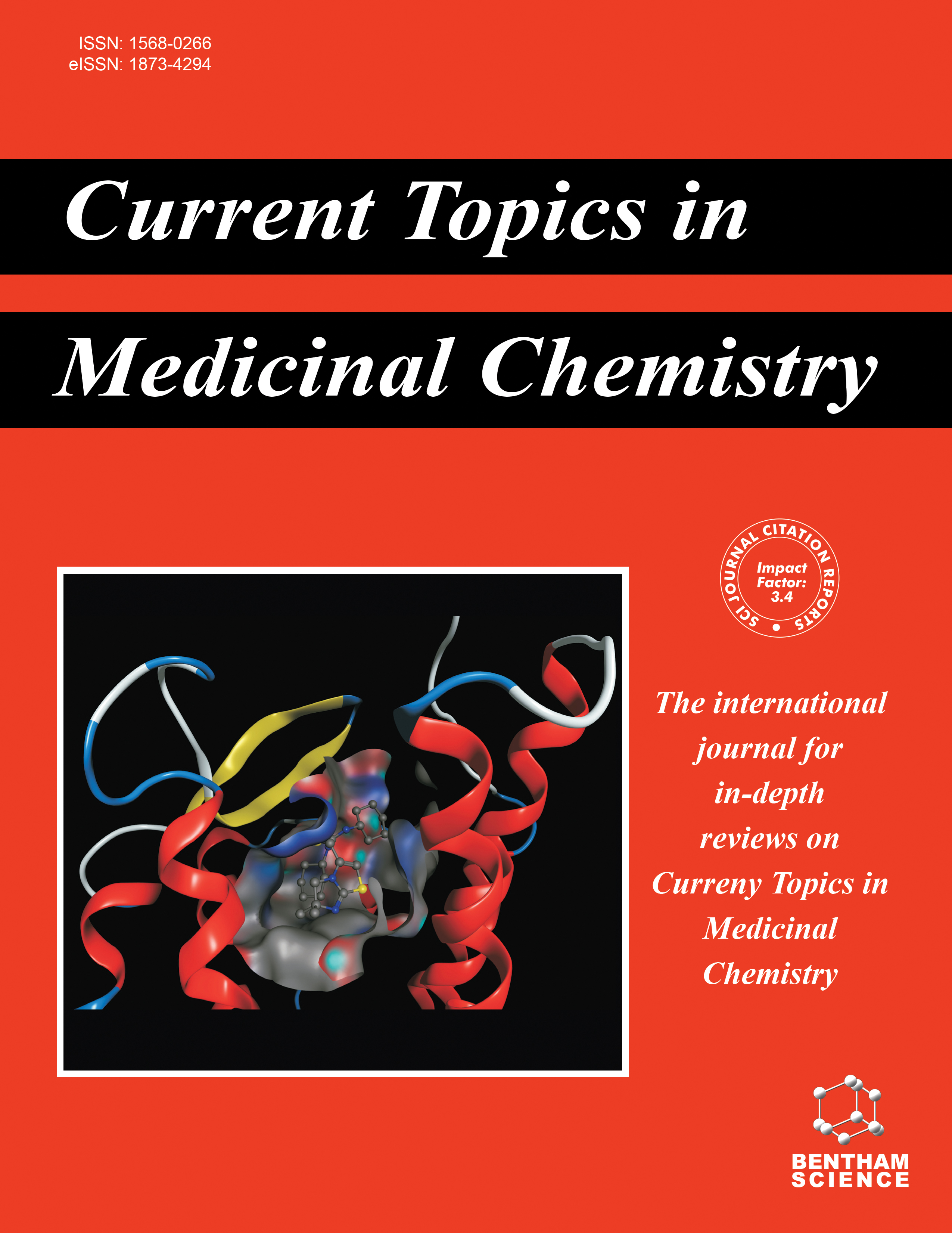- Home
- A-Z Publications
- Current Topics in Medicinal Chemistry
- Previous Issues
- Volume 2, Issue 8, 2002
Current Topics in Medicinal Chemistry - Volume 2, Issue 8, 2002
Volume 2, Issue 8, 2002
-
-
Subunit Composition, Distribution and Function of GABA-A Receptor Subtypes
More LessAuthors: W. Sieghart and G. SperkGABA-A receptors are the major inhibitory neurotransmitter receptors in the brain and are the site of action of many clinically important drugs. These receptors are composed of five subunits that can belong to eight different subunit classes. Depending on their subunit composition, these receptors exhibit distinct pharmacological and electrophysiological properties. Recent studies on recombinant and native GABA-A recept Read More
-
-
-
GABA-A Receptor Ligands and their Therapeutic Potentials
More LessAuthors: B. Frolund, B. Ebert, U. Kristiansen, T. Liljefors and P. Krogsgaard-LarsenThe GABA-A receptor system is implicated in a number of neurological diseases, making GABA-A receptor ligands interesting as potential therapeutic agents. Only a few different classes of structures are currently known as ligands for the GABA recognition site on the GABA-A receptor complex, reflecting the very strict structural requirements for GABA-A receptor recognition and activation. Within the series of compoun Read More
-
-
-
Mapping of the Benzodiazepine Recognition Site on GABA-A Receptors
More LessBy E. SigelLigands of the benzodiazepine binding site of the GABA-A receptor come in three flavors: positive allosteric modulators, negative allosteric modulators and antagonists, all of which can bind with high affinity. The GABA-A receptor is a pentameric protein which forms a chloride selective ion channel and ligands of the benzodiazepine binding site stabilize three different conformations of this receptor channel. Classical benz Read More
-
-
-
GABA-A Receptor Complex and Memory Processes
More LessAuthors: G. Chapouthier and P. VenaultConsiderable evidence has been provided these last years for the involvement of the GABA-A receptor complex in memory processes. Compounds that enhance the action of GABA, such as benzodiazepines, impair memory processing. On the contrary, compounds that reduce the action of GABA, such as ß-CCM, pentylenetetrazol or picrotoxin, have the opposite action, that is : enhance memory processing. All these actions Read More
-
-
-
GABA-A-Receptor Ligands of Flavonoid Structure
More LessAuthors: M. Marder and A.C. PaladiniThis review describes the new research developments that have established the CNS-activity of some natural flavonoids. The properties of flavone, chrysin, apigenin and cirsiliol are described and a survey of the occurrence of ligands for the benzodiazepine binding site in the flavonoid field is attempted. Natural compounds, structurally related to flavonoids and with similar CNS-activities, are also included.A medicinal chemistry Read More
-
-
-
GABA-A Receptors as Molecular Sites of Ethanol Action. Direct or Indirect Actions?
More LessAuthors: L.G. Aguayo, R.W. Peoples, H.H. Yeh and G.E. YevenesDespite the fact that ethanol is one of the most widely used psychoactive agents, the mechanisms and sites of action by which it modifies brain functions are only now being elucidated. Studies over the last decade have shown that ethanol can specifically alter the function of several ligand-activated ion channels including Nmethyl- D-aspartate (NMDA), serotonin (5-HT3), glycine and GABA-A receptors. After several years of Read More
-
-
-
Interaction of Steroids with the GABA-A Receptor
More LessOver the last two decades there has been a resurgence of interest in steroids as potential therapeutics for central nervous system disorders. This interest followed the discovery that neurosteroids and neuroactive steroids are potent modulators of GABA-A receptor function. This article traces those developments focussing particularly on the structure-activity relationships that have been identified through synthetic modificatio Read More
-
-
-
Medicinal Chemistry and Molecular Pharmacology of GABA-C Receptors
More LessGABA-C receptors belong to the nicotinicoid superfamily of ionotropic receptors that include nicotinic acetylcholine receptors, bicuculline-sensitive GABA-A receptors, strychnine-sensitive glycine receptors and 5HT3 serotonin receptors. The GABA-C receptor concept arose from medicinal chemical studies of a conformationally restricted analog of GABA. Receptors matching the predicted properties of GABA-C receptors we Read More
-
Volumes & issues
-
Volume 25 (2025)
-
Volume 24 (2024)
-
Volume 23 (2023)
-
Volume 22 (2022)
-
Volume 21 (2021)
-
Volume 20 (2020)
-
Volume 19 (2019)
-
Volume 18 (2018)
-
Volume 17 (2017)
-
Volume 16 (2016)
-
Volume 15 (2015)
-
Volume 14 (2014)
-
Volume 13 (2013)
-
Volume 12 (2012)
-
Volume 11 (2011)
-
Volume 10 (2010)
-
Volume 9 (2009)
-
Volume 8 (2008)
-
Volume 7 (2007)
-
Volume 6 (2006)
-
Volume 5 (2005)
-
Volume 4 (2004)
-
Volume 3 (2003)
-
Volume 2 (2002)
-
Volume 1 (2001)
Most Read This Month
Article
content/journals/ctmc
Journal
10
5
false
en


